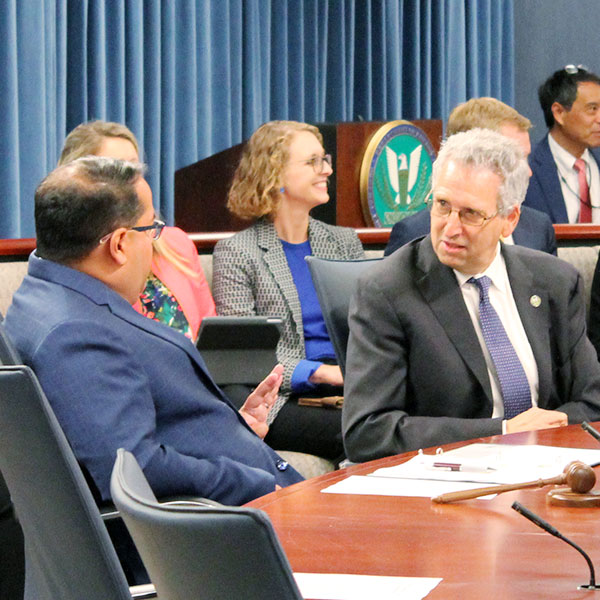By Holden Mann
Utilities must prepare for the reliability challenges that increased penetration of inverter-based resources will pose, according to members of NERC’s Inverter-based Resource Performance Task Force (IRPTF).
During a webinar Thursday discussing a recent white paper on fast frequency response (FFR), IRPTF members observed that the shift toward renewable resources such as wind and solar energy has made many parts of the grid less resilient overall. This effect is especially visible in the Texas interconnection, where the addition of new generators to a more limited existing base has a larger effect.
“We’re seeing changes in system inertia that are affecting ROCOF [rate of change of frequency]; we’re needing to ensure that we have sufficient reserves available; and more importantly than ever before, we’re needing to focus on the speed and the magnitude of those reserves to make sure we get a sufficient response that we need in a given time frame,” said Ryan Quint, NERC’s lead engineer for advanced system analytics and modeling.
New Generation Demands New Approach
The primary focus of the white paper and the webinar’s discussion was the fundamental difference between traditional synchronous generation and nonsynchronous resources, which require different responses to sudden changes in system frequency that can be caused by widespread outages or loss of generating capacity.
While traditional thermal generators can typically be spun up relatively quickly to restore the target frequency — serving as primary frequency response — this is much harder to do with solar and wind power that cannot be increased on demand. To handle those situations, utilities are encouraged to invest in FFR resources, which can quickly inject power into or absorb it from the grid as needed to prevent underfrequency load-shedding events.
Using renewable resources for this purpose is made more challenging by the fact that, for economic reasons, photovoltaic and wind turbines are normally run at the maximum capacity allowed by weather conditions.
“Because they’re operating at the maximum power … they can reduce power as the frequency increases, but they do not have any excess available to increase power when the frequency dips,” said Siddharth Pant, senior managing engineer at GE Power Conversion. “[But] if the economics were attractive or they were forced by regulation, or if FFR was made an auxiliary service, you could operate a PV plant in a curtailed mode … so it could provide increasing power at lower frequencies.”
The white paper also examined potential benefits from grid-connected battery storage solutions, as well as techniques for adjusting the frequency output of wind turbines without changing rotational speed, though IRPTF stressed that these studies are still at a preliminary stage.
Participants noted that FERC appeared to address some frequency response challenges by requiring newly interconnecting generators to have the capacity to respond automatically to frequency disturbances (Order 842, RM16-6). Quint described this requirement as a step in the right direction, but said more work needs to be done by balancing authorities to identify when new FFR capabilities are needed and ensure all facilities are operating to the same standards.





